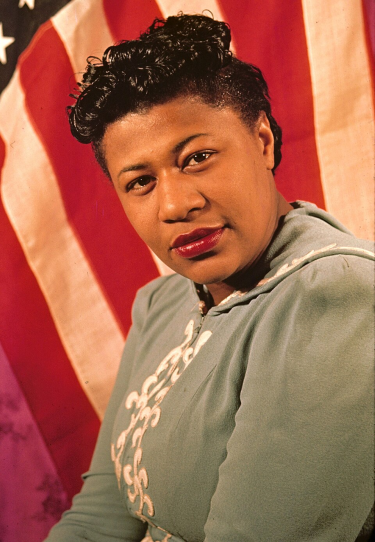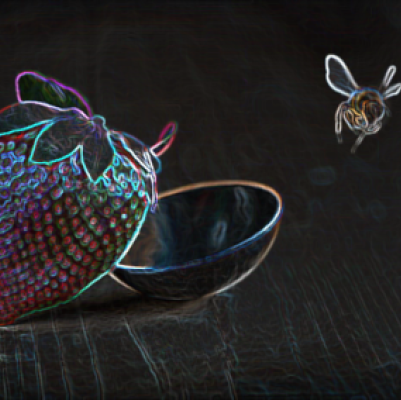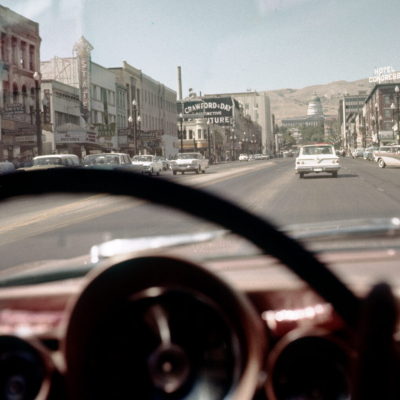.
.
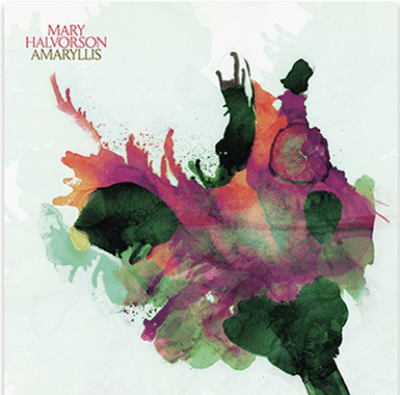
NPR describes Mary Halvorson as “the most future-seeking guitarist working right now.” Her Nonesuch album, Amaryllis, is among the recordings consistently listed by jazz critics as a top album of 2022
.
.
___
.
…..It’s time for our annual compilation of “Best of” jazz recordings, this time for 2022. As always, there are a large number of “Best of” lists to be found on the Internet, and the goal of this post is to present those jazz albums oft mentioned by a wide range of critics.
…..While these 15 albums hardly constitute a comprehensive assessment of the “Best Of the ‘Best Of’” lists, it does provide some guidance about 2022 recordings critics seemed to agree about, and suggest we check out more thoroughly.
…..The recordings are listed in no particular order, and may include a link to an artist or record company website, as well as to a critic’s more complete review of the album. Readers will also discover that a song from each album is available for listening. The lists utilized to compile this one are found at the conclusion of this post.
…..Jazz music is in good hands…Enjoy!
.
.The songs have been compiled on to a Spotify playlist, which can be accessed at this post’s conclusion
.
.
_______
.
.
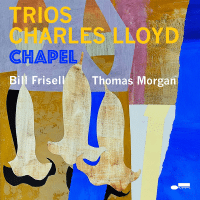
Charles Lloyd
Trios/Chapel
.
“At age 84, tenor saxophonist Charles Lloyd remains a force of nature, blowing blues, ballads, and uptempo rousers with grace, verve, and beauty. This live trio date, recorded in San Antonio’s Coates Chapel (hence the title), dwells mainly in the mellow, but the harmonies are sublime and the interplay with guitarist Bill Frisell and bassist Thomas Morgan intricate. Highlights include Billy Strayhorn’s “Blood Count” and Lloyd’s own “Song My Lady Sings.”
-Fred Kaplan/Slate
.
“Charles Lloyd, at 84, is still a seeker. He has conceived a new ensemble format, the drummerless trio, and expressed it in three personnel configurations on three new recordings. All are among the top jazz albums of 2022. Chapel is favored here because it beautifully juxtaposes two dissimilar languages of lyricism (Lloyd’s and Bill Frisell’s), and because Thomas Morgan, who used to be the best young bass player in jazz, is now the best bass player, period.”
-Thomas Conrad/Jazz Times
.
“Blood Count”
[Universal Music Group]
.
.
_______
.
.
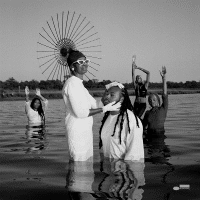
Immanuel Wilkins
The 7th Hand/ [Blue Note]
.
“With his quartet, Wilkins shows that tilted rhythms, extended harmony and acoustic instruments — the “blending of idea, tone and imagination” that, for Ralph Ellison, defined jazz more than 50 years ago — can still speak to listeners in the present tense.”
-Giovanni Russonello/New York Times
.
“Not unlike his biggest hero Kenny Garrett, Wilkins on The 7th Hand plays the alto with a deceivingly wispy yet soulful tone. Among other achievements is his delivery of intricate solos with an eloquent narrative development that constantly remains succinct and melody driven.”
-Selwyn Harris/Jazzwise
.
.
“Fugitive Ritual, Selah”
[Universal Music Group]
.
.
_______
.
.
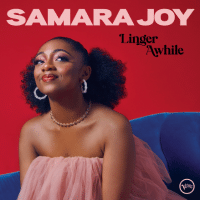
Samara Joy
Linger Awhile/ [Verve]
.
“Whether her self-titled debut, or her latest, Linger Awhile, singer Samara Joy has quickly shown a developing style that indicates she’s in for the long haul – alive in this music. Whether embracing a ballad, or adding her spirit to something uptempo, she tells each story like she’s been there. The emerging sound I hear tells me we should all keep our eyes and ears open for what comes next.”
-Gary Walker/WBGO Radio
.
“Just 23, Samara Joy is the new young jazz singer, a child of the Bronx who grew up singing in church, glommed onto the jazz classics (Sarah Vaughan, Ella Fitzgerald, Billie Holiday), and joined the caravan of tradition. She’s old-school (in a good way), and hasn’t yet developed her own sound, but her voice is smooth and gorgeous, she knows how to phrase a lyric for an effect, and she’s backed by a first-class rhythm section including spicy Kenny Washington on drums.”
-Fred Kaplan/Slate
.
.
“Guess Who I Saw Today”
[Samara Joy]
.
.
_______
.
.
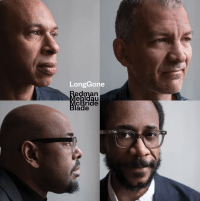
Redman/Mehldau/McBride/Blade
LongGone/ [Nonesuch]
.
“If Long Gone proves nothing else, it is that the rekindling of chemistry between Joshua Redman, Brad Mehldau, Christian McBride & Brian Blade, as represented on 2020’s ‘Round Again, was no fluke. Indeed, when taken together, these two releases pose the question of whether there has ever been such a reunion of elevated pedigree in the jazz oeuvre: John Coltrane’s come-and-go with Miles Davis’ in the Sixties comes to mind, but this four-way regrouping would appear to be a phenomenon unto itself. That said, the foursome picks up right where they left off literally and figuratively. As with its predecessor, this record is very much akin to the occasion wherein old friends meet up again after a prolonged interval apart and, in very short order, find out that the traits that first brought them together not only remain in plentiful supply but have grown all the more abiding with the passage of time.
-Jim Hynes/Glide Magazine
.
“Disco Ears”
[Nonesuch].
.
.
_______
.
.
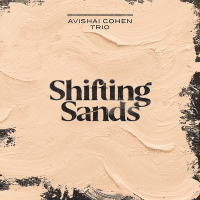
Avishai Cohen Trio
Shifting Sands
.
“Shifting Sands proves he’s not resting on his laurels, but don’t take our word for it. Listen to ‘Intertwined’ – the charged opening track and the cornerstone of the record – and you’ll feel right away that he raised the bar again. The message is loud and clear: it’s a new adventure on the DNA that you were already familiar with. Since the beginning of the century Avishai Cohen has travelled a varied road. He appeared leading with orchestras, led smaller ensembles and even duets. But it is the Trio format that he always returns to.”
-Paul Cash/Hi-Fi Trends
.
“Intertwined”.
.
.
_______
.
.

Mary Halvorson
Amaryllis/[Nonesuch]
.
“It’s hardly news that there are two levels of composition in jazz – first, the format realm of tunes and arrangements, and second, the spontaneous magic of improvisation. With her twin solo albums, Amaryllis and Belladonna, Mary Halvorson proves that she’s top-of-the-field on both fronts, operating in two distinctly milieus.”
– J. D. Considine/Downbeat
.
“[A] daring but increasingly classic-sounding guitarist/composer…As a solo artist, [Mary Halvorson] has moved over to Nonesuch Records, which suggests a certain creative seriousness. Instead of taming the master of the weird-tone-bent axe, Nonesuch has clearly lifted Halvorson’s sense of purpose. Amaryllis extends the form of her previous quintet/octet recordings with a new sextet of brass (Jacob Garchik’s trombone and trumpeter Adam O’Farrill) and rhythm (Patricia Brennan’s vibes, guitar, bass, and drums).
“Then she shakes a string quartet on several tracks. Is this too much? Nope. The vibes/bass/drums rhythm section has the open-but-contrapuntal effect that we all prize on Eric Dolphy’s Out to Lunch, with O’Farrill’s and Garchik’s improvisations riding above that clatter in a melodic but free way. The whole sound is fully integrated: like a Blue Note quintet date that happens to feature the new century’s hippest guitarist and a layer of lyrical complexity in strings. Unconventional but still accessible, Amaryllis is a stunner across boundaries.”
-Will Layman/Pop Matters
.
“Night Shift”.
[Nonesuch]
.
.
_______
.
.
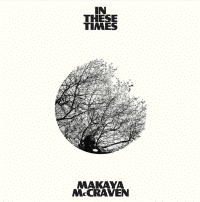
Makaya McCraven
In These Times/[Nonesuch]
.
“Makaya McCraven, the Chicago-based drummer and producer, spent years recording, stitching together and plumping up the tracks that appear on In These Times. Mixing crisply plucked harp, springy guitar, snaky bass lines, horns, drums and more, he’s drawn up an enveloping sound picture that’s often not far-off from a classic David Axelrod production, or a 1970s Curtis Mayfield album without the vocal track.”
-Giovanni Russonello/New York Times
.
“In These Times”.
.
.
_______
.
.
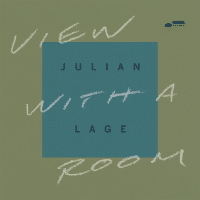
Julian Lage
View With a Room/[Blue Note]
.
“Leading a trio joined on seven tracks by similarly restless guitar explorer Bill Frisell, Lage applies his gorgeous tone, impeccable rhythmic feel, and intriguing note choices to a set of original compositions drawing from jazz, blues, rock, and Americana. The shimmering sounds and interplay with bassist Jorge Roeder and drummer Dave King (the Bad Plus) grow more entrancing with each listen. The slow-burning “Echo” and churning, busy “Word for Word” are among many standout tracks.”
-Philip Booth/Jazz Times
.
“Echo”
[Universal Music Group]
.
.
_______
.
.

Cecile McLorin Salvant
Ghost Song/[Nonesuch]
.
‘The primary undercurrent is a sense of haunting, of restlessness and torment. It is all there in Salvant’s finely shaded voice down to every careful accent and emphasis on revelatory lyrics, which are potently consolidated by the advanced subtleties of an ensemble in which master guitarist Marvin Sewell is both a suitably corporeal and spectral presence, drawing on his consummate bluesiness with no concession to cliché.’
Kevin Le Gendre/Jazzwise
.
“Cécile McLorin Salvant has reigned as the premier jazz singer of our times for six or so years now. Still just 33, she keeps getting better, keeps evolving, and her latest, Ghost Song, is unlike anything she’s ever done. It’s a mix of originals and covers (none of them, strictly speaking, jazz songs) that amounts to a suite about love and loss, the span of life and death. The covers have a quirky range—Kate Bush, Kurt Weill, Sting, a piece from The Wizard of Oz—and her originals reveal a new sophistication. Blessed with an operatic range, she remains a master singer of blues, swing, precision, wit, and storytelling drama. Her band members, who vary from track to track, are exquisitely matched. The sound quality is superb.”
-Fred Kaplan/Slate
.
“Ghost Song”
[Nonesuch]
[Non.
.
.
_______
.
.
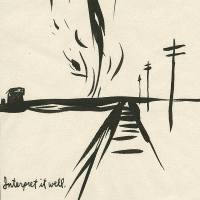
Ches Smith
Interpret It Well/[Pyroclastic]
.
“Considering that drummer/vibraphonist/composer Ches Smith did not debut as a leader until his 2016 The Bell on ECM, he has certainly been prolific in the years since. His debut featured pianist Craig Taborn and violaist Mat Maneri for a trio recording which he now expands to a quartet with the addition of renowned guitarist Bill Frisell.
“Given the instruments involved and Frisell’s penchant for loops and effects, this quartet adroitly delivers textures, layers, and an array of sonics that are often spellbinding. These are minimal compositions that allow freedom for these improvisers. Just when it seems placid, the next piece will rustle you out of your hypnotic state. This is far from the typical head-solo-solo-head format as there is rarely a solo; instead, we find the players reacting to each other and sharing new ideas along the way.”
-Jim Hynes/Glide Magazine
.
“Trapped”.
.
.
_______
.
.

Marta Sanchez
SAAM/Spanish American Art Museum
.
“Marta Sanchez’s music is always a journey. I said this about her 2022 release SAAM back in February, and I’ve probably written the same in so many words for each of the pianist’s prior recordings. Because it’s true. An intro’d melody is like Sanchez throwing open a door to a path that leads into undiscovered lands, and inevitably the pianist goes about mapping out every inch of that new territory, bringing the listener along for a very thrilling ride. With alto saxophonist Alex LoRe, tenor saxophonist Román Filiú, bassist Rashaan Carter, and drummer Allan Mednard (plus guest spots by Camila Meza, Ambrose Akinmusire, and Charlotte Greve), Sanchez offers up more evidence of why she’s one of the preeminent pianists on the modern jazz scene.”
-Dave Sumner/Bandcamp
.
“Marivi”.
.
.
_______
.
.
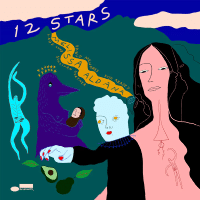
Melissa Aldana
12 Stars/[Blue Note]
.
“The Chilean-born, Brooklyn-based tenor saxophonist, delivers a profoundly expressive album that embraces emotions surrounding childrearing, familial forgiveness, acceptance, and self-love. Producing the album is Norwegian guitarist Lage Lund, who surely puts his stamp on the sound, and joins the acclaimed pianist Sullivan Fortner, drummer Kush Abadey, and longtime collaborator, bassist Pablo Menares.
“The eight pieces, feature tributes to moments of trials and triumph during 2020, a major period of self-reflection for so many of us. Although Aldana cites Sonny Rollins as her major mentor, these contemplative and emotive tunes bear more similarity to Wayne Shorter. In any case, this is Aldana focusing acutely on her own sound, which remains expressively pure throughout, lyrically centered, free of any aggressive blowing or traditional “swing.” It reads, as intended – a continuous journey of her different mood phases. Deeply crafted, with the balance tilted toward composition rather than improvisation, Aldana paints evocative tapestries.”
-Jim Hynes/Glide Magazine
.
“Falling”
[Blue Note]
..
.
.
_______
.

Nate Wooley & Columbia Icefield
Ancient Songs of Burlap Heroes/[Pyroclastic]
.
“Nate Wooley is a brass player with an atypical, compelling sound. This suite of three long tracks surrounded by shorter moody intros/outros is drenched in electronics of the most organic kind: [Mary] Halvorson (again!) and her trippy effects, pedal steel wizard Susan Alcorn and her bent-note tension, and Wooley’s use of an amplifier with his horn. Composed sections are beautiful and precise, untethered to chord changes or an unwavering groove. The antecedent, perhaps, is the early 1970s electric music of Miles Davis but without the swamp groove. Violist Mat Maneri joins on one track and bassist Trevor Dunn on another. The result is slightly more impressionistic and modern, with the guitars crisscrossing with Ryan Sawyer’s drums and the other voices in open space. If Waiting for Godot were to be translated into instrumental music, this might be it: lonely and soulful, sad and amusing too.”
-Will Layman/Pop Matters
.
“This is intensely beautiful and contemplative work, full of heart-stopping solo and duo passages, often spotlighting [Mary] Halvorson and Susan Alcorn more than the nominal leader, as well as powerful, almost hard-rock crescendos. The nature sounds place it into the context of life and the world, though of course it’s all part of a large and elaborate illusion.”
-Philip Freeman/Downbeat
.
“Returning to Drown Myself, Finally”.
.
.
_______
.

Joel Ross
The Parable of the Poet/[Blue Note]
.
“Vibraphonist Joel Ross is a [Immanuel] Wilkins collaborator and contemporary, and his new Blue Note recording is also his best. It features a four-horn front line that includes Wilkins, as well as Marquis Hill (trumpet), Maria Grand (tenor saxophone), and Kalia Vandever (trombone). If that sounds like it might be a Jazz Messengers kind of outing, well, that is just one of this recording’s modes. The program of intricate composition/improvisation uses its colors as pastels as well as primaries.”
-Will Layman/Pop Matters
.
“Prayer”
[Blue Note]
.
.
_______
.
.
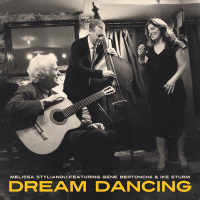
Melissa Stylianou
Dream Dancing/[Anzic]
.
“For her latest outing, Melissa Stylianou leaned into the Great American Songbook for a collection of brilliant reinventions. She’s accompanied by Gene Bertoncini on acoustic guitar and stand-up bass player like Sturm, but they play together like a band, not a singer with backing musicians.”
-j.poet/Downbeat
.
“If You Never Come To Me”.
.
.
_____
.
.
The songs have been compiled on to this Spotify playlist
.
.
_____
.
.
The lists and reviews utilized for this feature can be accessed by clicking on the links below:
.
.
.
.
_____
.
.
Click here to read “The Best of ‘The Best of’ in 2021 Jazz Recordings”
Click here to read “The Best of ‘The Best of’ in 2020 Jazz Recordings”
.
.
Click here to subscribe to the Jerry Jazz Musician quarterly newsletter
Click here to help support the ongoing publication of Jerry Jazz Musician
.
.
.
.
.
.
.
..
.
.








